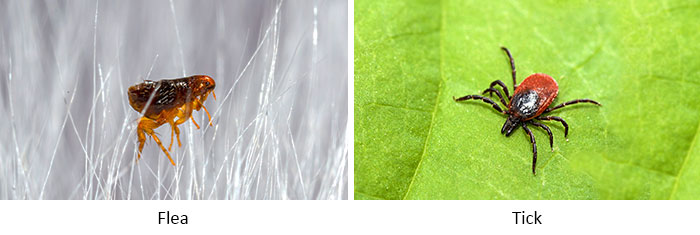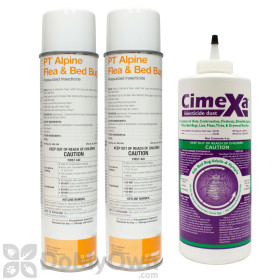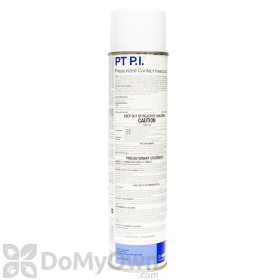Learn the Differences between Fleas and Ticks

Fleas or Ticks: Similarities
- Fleas and ticks both transmit diseases and health issues. Fleas transmit tapeworms, while ticks transmit Lyme disease and Rocky Mountain spotted fever.
- These insects feed on blood, and in this case, both animals and people are affected.
- Both cause an irritating bite, with a red mark left behind.
- Pets are affected by these pests, and can cause serious health issues for animals if left untreated.
- Often, especially for pets, the same products can be used to control fleas and ticks. Most animal treatments, including spot-ons, powders, sprays, and medications control fleas and ticks. Pets who spend time outdoors should always be treated for these insects, especially during flea and tick season (warmer months).
Fleas or Ticks: Differences
Fleas and ticks have more differences than similarities:
Appearance: Ticks, while more difficult to identify on their own, are generally larger than fleas. Fleas are about 1/8th of an inch long and often appear as small dark specks on fur and clothing. Details in fleas are often only visible under a microscope. Ticks are flat, teardrop shaped, and dark in color, although there are many species of ticks you might encounter and color and size are not great indicators of tick species.
Habits and Treatment:
- Fleas often become an issue because infested pets come inside, where fleas then hide and reproduce in your home, causing an indoor infestation. Fleas will continue to feed on your animal and can even feed on you. This means you will have to treat your pet and your home with flea treatment products. While you can control fleas outdoors, generally, fleas are an indoor issue and an on-pet issue.
- Ticks generally don't cause indoor infestations. Any pet that spends a lot of time outdoors can pick up the occasional tick, just like when people do. Ticks wait for hosts to brush past the foliage they are on and they then latch on to their host. Checking yourself and your pets for ticks is very important, since ticks left on the body for more than 24 hours have a greater chance of passing on diseases. Ticks brought inside can eventually latch on to you, too, but a house-wide treatment is usually not necessary. Ticks are best treated outdoors, by methods of non-chemical control (like trimming grass short and cutting back foliage) and insecticides that can be sprayed in your yard. People need to be protected and take action against ticks when spending time outdoors, since people are just as susceptible to tick-borne diseases as pets are.










